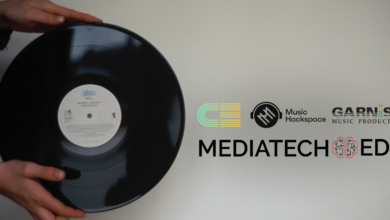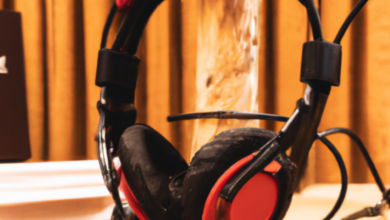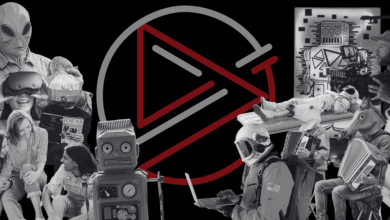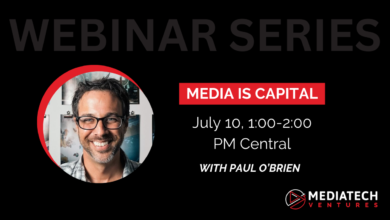
“Every child is an artist, the problem is staying an artist when you grow up.”
– Pablo Picasso
Being the computer geek that I am, our house is littered with old computers, monitors, dvd players, and cables. Nothing gets thrown away, on the off chance that that 500 MB hard drive from 2002 needs to be used.
Being a dad of three kids, opening the attic to our junk is a family event in creativity, invention, and history. Out comes the old 32″ LCD TV so that we can take it apart and explore how it worked. Out comes an old laptop which surprisingly boots right up, and on which my kids find an old recording of myself at a microphone around 1996.
Introducing technology to our kids is, of course, paramount these days but as we wrestle with how to teach our kids to code, what to teach them to build and learn, and the impact exposure to technology has on our society and mental health, the trick, in raising kids to be healthy and successful in our future, isn’t in the technology, it’s in the creativity.
Education is not the filling of a bucket but the lighting of a fire.
W.B. Yeats
Picture if you can, the state of technology and education around 1993; the year I was roughly the age of my oldest. Computers were found only in the typing class classroom, and the A/V club was VHS tapes, camcorders, and closed circuit television. This was the last few years of the classroom movies with which the teacher or student aid had to thread the film strip through the machinations of the projector.
Portage Northern High School in Michigan, my school, had in it a radio station, thanks in no small part (as far as I knew/know) to a creative teacher that inspired thousands, Jim Menchinger. “Mench,” a Forensics teacher, who during his 50 years of teaching and coaching, led three teams to Class A or Class B state forensic championships and won two novice state championships, retired some years ago, and in 2011 was inducted into the National Forensics League Hall of Fame.
I share that because there is a reason I remain a computer geek today; I love sitting behind a screen, and while my personality in public seems extroverted, I’m very much so more comfortable at a keyboard and working with technology.
But technology changes. Technology ever evolves. Introducing our kids to technology and preparing them for the future means ensuring Picasso’s artistry or Yeat’s fire is so embedded in their lives that they find their voice and their creative spirit so that they might bring their own future to life.

Jim Menchinger did that for me and I never properly thanked him, so I’m doing it now as the circumstances are apropos. In high school, I tried my hand at theater, debate, and forensics, with many more great educators to thank along the way, but it was when I saw the radio gear in the middle of the high school that I raised my hands and said, “can I?”
As my kids dug through piles of aging technology in our house, they found old computer speakers, antiquated mobile phones, and microphones, and they asked, “can we?”
“Of course, but you need to figure it out.”
- Time Out With Sisters
- Weird But True World
- Wild Kids
With no experience podcasting, three kids set about starting those shows; those ideas. They developed logos and ideas, put up the show names in one of our rooms at home, set up an “On Air” sign at the door, and starting cobbling together an old laptop, monitor, speakers, and microphone so that they could start podcasting.
I wanted to share these stories not to introduce my kids’ podcasts, they’re responsible for figuring out how and doing that when they’re ready; I wanted to share with parents how to foster the same in your kids.
A laptop, speakers, a microphone, and the necessary software are all it takes. And yes, you could do it through a smartphone and an app… you could get a “mixer” or setup-in-a-box (as it were) for podcasting… you could. What I really wanted to introduce and encourage was how easy it actually can be. And I thought I might encourage both doing this at home, and exploring how your school can do the same.
A laptop, speakers, a microphone, and the necessary software are all it takes.
That setup leaves to big questions which shouldn’t overwhelm:
- What kind of microphone??
- What software?

In the first case, what my kids found was an old(ish) Audio-Technica ATR2100. You can find and buy it here. There are, among audiophiles, higher quality micophones and you can find even less expensive options; at the time of this writing, that one will run you about $60. Keep in mind that our goal here isn’t a cutting class podcast studio nor serious investment on anyone’s part – let’s just enable your kids to try. The ART2100 plugs into the USB port on your laptop, has a volume control on it, and lets your kids put some earphones in the microphone so it seems a little more advanced than a your run-of-the-mill laptop mic used in your office meetings or teleconferences.
As for the software, they were on their own. I led them only with three words of advice:
- You can find something inexpensive on the internet, Google it.
- You need to be able to easily record your shows
- You’ll want to edit them to add show intros, breaks, or music like you hear on the radio.
Brandon Hull, Founder of HelloCast, shared with me in a Quora discussion,
Hard to not recommend Audacity or Hindenburg Journalist here, as they’ve got the fastest learning curves. Audacity is free, Hindenburg starts at $95.
The reason I recommend these two is how quickly a user can either record or import a piece of audio and begin making edits to it. If you import an audio file, you can simply drag-and-drop it onto a track in either of these apps, and begin applying a fade in, fade out, cutting elements out of the audio, etc.
And that’s what they found. Audacity.

Audacity is an easy-to-use, multi-track audio editor and recorder for Windows, Mac OS X, GNU/Linux and other operating systems.
Oof… still a bit of a mouthful. Simply put, it’s software for recording and mixing together audio. And it’s free.
Now, from the looks of it in the screenshot there, it can seem still overwhelming, but as I’m sure most of you have experienced, to the mind of a 10 year old it just a bunch of features and buttons to try. And try they will.
Installed to your languishing laptop, microphone plugged in, press the all familiar red record button and off they go. And before we concern ourselves with WHERE to publish a show, as well as the concerns you might have of their privacy and safety online, appreciate that creativity stems from the liberty to try and the resources with which to do. I found my kids don’t need an audience any more than I really ever cared if anyone in high school was listening to me on the radio; adults need affirmation from their audience, kids just need the encouragement to try.
Ideas with which to inspire? Run with these at home or at school:
- Make an advertisement – my middle daughter has a penchant for singing songs about things in the store, or shows she likes; give them a minute to make a commercial (trust me, a skill that will always be valuable).
- Record their speeches – from Show and Tell to running for class President, kids will be thrust in front of their class and asked to speak. Recording and hearing themselves is a wonderful feedback loop that will inspire them to do better while they enjoy the process.
- Promote reading – create an audiobook, in a sense, or show them how they too can create a story to which people can listen, as they might listen to Amazon Alexa read a story (if you do that at home); simply, record them reading their favorite book.
- Record sounds or voices overs for presentations – they’ll have Google Slide or PowerPoint presentations in class, consider recording and playing themselves adding some information to the presentation.

All that, of course, aside from the encouragement to start a radio show or podcast… get on the mic and talk about their favorite things, interview siblings and friends, or write scripts and start a comedy or history show.
Every adult is an artist born of a child that never stopped dreaming and who was introduced to the joy of taking risks that might fail: creativity. It’s in that artistry that we find ourselves and enjoy our lives that much more. All it takes, it seems, is a little audacity.







Good stuff. Mench was also the first person to tell me I had a talent, circa 1980. Sad to see that the radio station at PNHS is no longer around.
No longer there?? Say it ain’t so. I’m exploring a bit how to update the media clubs on High School campuses. Seems more important now than ever, with YouTube, Instagram, and Snapchat, that we teach our kids about media while continuing to enable the radio (podcast?) voices of tomorrow.
Would be cool, schools would need $/supplies and teachers. You could also sign up to offer after school classes. If they fill up 🙂
My high school had a TV station in the early 90s that I was part of. My husband started up the one at our college.
Deanna Ramirez local tv station sponsorship? My high school had their tv station revamped thanks to a generous local station.
Great tutorial and words of wisdom here Paul! Nice work.
Love this! Thanks for posting.
Great tutorial and words of wisdom here Paul! Nice work.
Cedar Park High School has The Wolfcast (school news). My son is in an A/V class too.
I was also on the radio and the TV news at PNHS. It was hard work and fun!
Kids are becoming our tech support for how to do things technical — it’s one of their natural languages – which of course is highlighted to texting expertise (at the expense of good ol’ verbal communication)!
My son has a similar set up. He actually also has a green screen. He loves creating videos and gets super creative. Been this way since elementary years. Have to admit, we are a family of geeks and hackers. This stuff comes naturally as we always have electronic hard drives, cords and whatever else you can think of.
Would you be interested in having a convo about how we can get this going? Cost? HS and MS has some equipment but not sure about any of the elementary schools.
I see what you did there ?